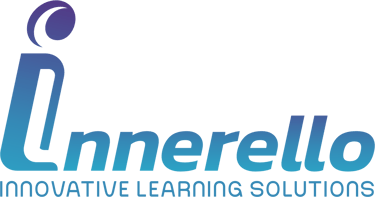Skill Development for Success L&D
In today's rapidly evolving business landscape, staying ahead of the curve is no longer a luxury—it's a necessity. 🚀 But how can organizations ensure their workforce is equipped with the skills needed to drive success? Enter Learning and Development (L&D), the unsung hero of corporate growth and innovation.
Imagine a world where your employees are constantly upskilling, adapting to new technologies, and driving your business forward with ease. Sounds too good to be true? It's not—and that's where effective skill development through L&D comes into play. In this blog post, we'll explore the critical role of L&D in fostering skill development, from identifying essential competencies to implementing powerful strategies that yield measurable results. We'll also delve into the challenges you might face along the way and peek into the future of L&D. So, buckle up as we embark on a journey to unlock the full potential of your workforce and catapult your organization towards unprecedented success! 💪🔑
Understanding L&D's Role in Skill Development
Defining Learning and Development (L&D)
Learning and Development (L&D) refers to the strategic process of enhancing employee skills, knowledge, and capabilities to improve individual and organizational performance. It encompasses various activities, including training programs, workshops, mentoring, and on-the-job learning experiences.
The importance of L&D in today's workforce
In today's rapidly evolving business landscape, L&D plays a crucial role in:
Adapting to technological changes
Enhancing employee engagement and retention
Improving productivity and efficiency
Fostering innovation and creativity
Maintaining a competitive edge
Benefits of L&D Impact on Organization Skill enhancement Increased productivity Employee satisfaction Lower turnover rates Knowledge retention Improved decision-making Career development Stronger talent pipeline
Key responsibilities of L&D professionals
L&D professionals are tasked with:
Conducting needs assessments to identify skill gaps
Designing and implementing effective learning programs
Evaluating the impact of training initiatives
Aligning L&D strategies with organizational goals
Fostering a culture of continuous learning
By understanding these core aspects of L&D, organizations can better leverage skill development to drive success and stay ahead in an increasingly competitive business environment.
Identifying Critical Skills for Organizational Success
Now that we understand L&D's role in skill development, let's explore how to identify the critical skills that drive organizational success. This process is crucial for ensuring that your workforce remains competitive and adaptable in today's rapidly changing business landscape.
Conducting Skills Gap Analysis
A skills gap analysis is the foundation for identifying critical skills. This process involves:
Assessing current skill levels
Determining required skill levels
Identifying gaps between the two
Here's a simple framework for conducting a skills gap analysis:
Step Action Outcome
1 Survey employees and managers Current skill inventory
2 Review job descriptions and future needs Required skill set
3 Compare current vs. required skills Identified gaps
4 Prioritize gaps based on impact Action plan
Aligning Skills with Business Objectives
Once you've identified skill gaps, it's crucial to align them with your organization's strategic goals. This ensures that your skill development initiatives directly contribute to business success. Consider:
Short-term and long-term business objectives
Industry trends and technological advancements
Customer needs and market demands
Prioritizing Skill Development Initiatives
With limited resources, prioritizing skill development initiatives is essential. Focus on:
High-impact skills that address critical business needs
Scalable skills that benefit multiple roles or departments
Future-proof skills that will remain relevant in the long term
Balancing Hard and Soft Skills
While technical skills are important, don't overlook the value of soft skills. A well-rounded workforce should possess both:
Hard skills: Technical knowledge, data analysis, programming
Soft skills: Communication, leadership, adaptability, emotional intelligence
By identifying and developing a balanced set of critical skills, organizations can build a resilient and high-performing workforce capable of driving success in an ever-evolving business landscape.
Effective Strategies for Skill Development
Now that we've identified critical skills for organizational success, let's explore effective strategies for skill development. These approaches can significantly enhance your L&D initiatives and drive better outcomes for your organization.
A. Implementing personalized learning paths
Personalized learning paths cater to individual needs and preferences, making skill development more engaging and effective. By tailoring content and pace to each learner, organizations can achieve better results and higher retention rates.
B. Leveraging technology in skill development
Technology plays a crucial role in modern skill development. Here's a comparison of different tech-enabled learning methods:
Method Advantages Best For Virtual Reality Immersive experience Hands-on skills AI-powered platforms Adaptive learning Diverse skill sets Mobile learning apps Flexibility and accessibility On-the-go learners
C. Encouraging continuous learning culture
Foster a culture of continuous learning by:
Providing regular learning opportunities
Recognizing and rewarding skill development
Integrating learning into daily work routines
D. Utilizing mentorship and coaching programs
Mentorship and coaching programs offer personalized guidance and support, accelerating skill development through:
One-on-one interactions
Real-world application of skills
Feedback and performance improvement
E. Incorporating microlearning techniques
Microlearning breaks complex topics into bite-sized, easily digestible modules. This approach:
Improves knowledge retention
Allows for flexible, on-demand learning
Addresses specific skill gaps efficiently
Next, we'll explore how to measure the impact of these skill development initiatives to ensure they're driving tangible results for your organization.
Measuring the Impact of Skill Development Initiatives
Now that we've explored effective strategies for skill development, it's crucial to understand how to measure their impact. This ensures that our L&D efforts are truly contributing to organizational success.
Establishing Key Performance Indicators (KPIs)
To effectively measure the impact of skill development initiatives, it's essential to establish clear and relevant KPIs. These indicators should align with both individual and organizational goals.
Common KPIs for skill development include:
Completion rates of training programs
Improvement in job performance metrics
Increase in employee productivity
Reduction in errors or quality issues
Employee retention rates
Tracking Employee Progress and Engagement
Monitoring employee progress and engagement is crucial for assessing the effectiveness of skill development programs. This can be done through:
Regular skill assessments
Performance reviews
Tracking participation in learning activities
Analyzing usage data from learning management systems
Assessing Return on Investment (ROI)
Calculating the ROI of skill development initiatives helps justify the investment and guide future decisions. Here's a simple formula to calculate ROI:
ROI Calculation Formula ROI (%) (Net Program Benefits / Program Costs) x 100
Net program benefits can include increased productivity, reduced costs, or improved quality of work.
Gathering and Analyzing Feedback
Feedback from participants, managers, and stakeholders is invaluable for measuring impact and improving future initiatives. Consider using:
Post-training surveys
Focus groups
One-on-one interviews
360-degree feedback assessments
By systematically measuring the impact of skill development initiatives, L&D professionals can demonstrate value, make data-driven decisions, and continuously improve their programs.
Overcoming Challenges in Skill Development
Addressing resistance to change
Resistance to change is a common hurdle in skill development initiatives. To overcome this challenge, organizations should:
Communicate the benefits of skill development clearly
Involve employees in the planning process
Provide support and resources throughout the learning journey
Managing limited resources and budget constraints
L&D teams often face resource limitations. Here are strategies to maximize impact:
Prioritize critical skills
Leverage free or low-cost learning resources
Implement peer-to-peer learning programs
Utilize microlearning techniques for efficient skill acquisition
Keeping up with rapidly evolving skill requirements
In today's fast-paced business environment, skills quickly become obsolete. To stay ahead:
Regularly assess industry trends and emerging technologies
Foster a culture of continuous learning
Partner with industry experts and thought leaders
Implement agile learning methodologies
Ensuring consistent skill development across diverse teams
Maintaining consistency in skill development across varied teams can be challenging. Consider these approaches:
Approach Description Personalized learning paths Tailor development plans to individual needs and roles Cross-functional training Encourage knowledge sharing across departments Virtual learning platforms Provide accessible, standardized training content Regular skill assessments Monitor progress and identify areas for improvement
By addressing these challenges head-on, organizations can create a robust skill development framework that drives success and adaptability in an ever-changing business landscape. With a strategic approach to overcoming these obstacles, L&D professionals can ensure that their skill development initiatives remain effective and aligned with organizational goals.
Future Trends in L&D for Skill Development
As organizations continue to evolve, so do the methods and technologies used in Learning and Development (L&D). Let's explore some of the most promising future trends that are shaping skill development in the workplace.
Embracing Artificial Intelligence and Machine Learning
AI and machine learning are revolutionizing L&D by offering personalized learning experiences and data-driven insights. These technologies can:
Analyze individual learning patterns
Recommend tailored content
Predict skill gaps and future needs
Incorporating Virtual and Augmented Reality in Training
VR and AR technologies are creating immersive learning environments that enhance engagement and retention. Benefits include:
Safe practice of high-risk scenarios
Realistic simulations for complex tasks
Cost-effective training for geographically dispersed teams
Focusing on Adaptive Learning Technologies
Adaptive learning platforms use algorithms to adjust content difficulty and pacing based on learner performance. This approach:
Optimizes learning efficiency
Reduces training time
Improves knowledge retention
Emphasizing Social and Collaborative Learning Approaches
Social learning tools and platforms are gaining traction, fostering knowledge sharing and peer-to-peer learning. Key features include:
Discussion forums
Collaborative projects
Mentoring programs
Trend Key Benefit Implementation Challenge AI/ML Personalization Data privacy concerns VR/AR Immersive experiences High initial investment Adaptive Learning Efficiency Complex content creation Social Learning Knowledge sharing Maintaining engagement
As we look to the future, these trends will play a crucial role in shaping effective skill development strategies. Organizations that embrace these innovations will be better positioned to cultivate a skilled, adaptable workforce ready to meet the challenges of tomorrow.
Skill development is a cornerstone of organizational success, and Learning & Development (L&D) plays a crucial role in fostering this growth. By identifying critical skills, implementing effective strategies, and measuring the impact of initiatives, L&D professionals can drive significant improvements in employee performance and organizational outcomes. However, overcoming challenges such as resistance to change and limited resources requires creativity and persistence.
As we look to the future, L&D must stay ahead of emerging trends and technologies to remain effective. By embracing continuous learning, leveraging data-driven insights, and adapting to evolving workforce needs, organizations can cultivate a culture of skill development that propels them towards long-term success. Investing in skill development through robust L&D programs is not just a strategic advantage—it's an essential component of thriving in today's rapidly changing business landscape.




